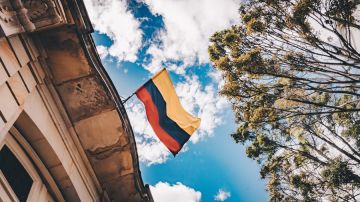Medellin’s Most Dangerous Neighborhood Revitalized Through Art
For years, travel to Colombia was associated with illicit activities like drugs and crime; the country has always had an air of mystery, danger, and adventure

Photo: Unsplash/@flacaral
For years, travel to Colombia was associated with illicit activities like drugs and crime; the country has always had an air of mystery, danger, and adventure. But for the people living in formerly narco infested hotspots like Medellin, life, and in many cases survival, was a hard-won prize. Until recently, not even the locals would ever dream of venturing into the treacherous, winding streets of areas like Comuna 13 — but now, what was once Medellin’s most dangerous neighborhood is getting a second chance at revitalization.
In 2002, the Colombian government launched a military offensive called ‘Operation Orion’; the goal was to oust rebel militias that had taken hold in the area, but the result was that paramilitary groups took over, leaving the nearly 100,000 residents of Comuna 13 caught in the crossfire. The aftermath of the military siege left the area in shambles, and saw a rise in violence and people being displaced from their homes.
“People would bar their doors and hide under beds to try to protect themselves from heavy gunfire and helicopter attacks” my guide Santiago Serna told me. Santiago was born and raised in Comuna 13 and knows first hand about the changes to the area — his brother John Serna, better known as Chota, is one of the most prolific street artists to have helped change the public perception of the neighborhood.
Much of the art that Chota and others create is centered on telling a story of hope, revival, and rebirth. Hip Hop permeates the air, and it’s not uncommon to come across young people dancing and rapping in the streets.
With limited access to resources, young people and community leaders have turned to the arts as a form of self-expression and a means to beautify their neighborhood. And after big investments in the local infrastructure — primarily in the form of a series of escalators and the Metrocable that connect the hillside neighborhood to the rest of the city — Comuna 13 has now become a tourist destination, injecting much-needed money and opportunities for economic advancement in the local community.
In just the past decade, tourism to Colombia has increased from 1.5 million visitors per year to over 3 million visitors per year. Not only is art providing the youth of Medellin with a creative outlet, but it has become a lure for culture-seeking travelers — this influx of tourism can have a big impact on areas like Comuna 13 that are considered to be low-income and whose inhabitants don’t have much recourse for making money. Which is why when traveling to any new city, particularly one with such a rich history as Medellin, I encourage you to experience the local culture and history for yourself. Explore new neighborhoods, ask people their stories, and participate in the local economy — in the case of Comuna 13, book a tour with a local tour guide so that you hear an authentic perspective and ensure that your money stays in the community.

















